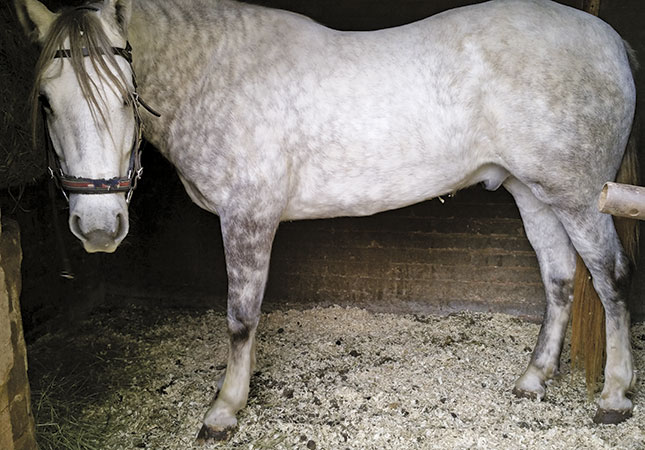
Laminitis is an inflammation of the sensitive structures in the hoof called the lamellae. These look like tiny folds of skin and are there to keep the coffin bone held tight within the hoof capsule. If you leave laminitis untreated, the horse will founder – the pedal bone rotates within the hoof capsule, sometimes penetrating the sole.
Signs include a reluctance to move when led, lying down more than normal, depression, hooves warmer than normal, fever rings visible on hoof wall and a pain response when pressure is applied to the sole.Several factors usually contribute to laminitis. A pony may have trotted too fast down a rough, stony road, damaging its hooves and increasing its risk of developing the condition at a later stage. Some horses are genetically predisposed to insulin resistance, and this will increase the risk of laminitis.
Cushing’s disease or traumatic injuries might also be involved. Your farrier will help you to manage the health of the horse’s hooves. Hooves should be trimmed every six weeks. Long toes delay ‘break over’, the point at which the hoof leaves the ground.
This, in turn, rips the wall away from the coffin bone – think of how painful it is when your fingernail is pulled away from the nail bed. High heels add to the problem as they increase the mechanical stress on the laminar connection. They prevent the frog from taking the weight, which means added stress to the hoof wall. Your farrier is trained to trim or shoe your horse according to its conformation.
Overweight
If your horse is overweight, not only will there be more pressure on the laminae, but the hormonal activities of the fat cells within fatty tissue, especially around the stomach (omental) and in the crest, will also be affected. This will further increase the risk of laminitis. Sugar levels in the diet need to be minimised to avoid a rise in insulin levels, and horses recovering from laminitis must be put on a diet free of sugar – molasses or starch.
In other words, all horses need to be fed diets low in carbohydrates and high in fibre. If your horse has an overload of soluble carbohydrates flowing into the hindgut, the microbial population will be imbalanced. When an excess of sugars or starch overflows from the foregut into the hindgut it is digested by bacteria, especially Streptococcus lutetiensis. These then multiply rapidly, producing lactic acid as a by-product.
As the hindgut becomes more acidic the walls become permeable and laminitis trigger factors (LTFs) ‘leak out’ into the bloodstream. When the LTFs reach the foot they precipitate laminitis.
Stress
Another LTF is stress. Travelling long distances or being separated from field companions can be very traumatic for horses.
Aside from limiting sugar and or starch, treatment involves re-establishing the correct bacterial population in the hindgut by feeding pre- and probiotics. Stable the horse or pony on a deep bed of shavings. Provide ample fresh water. Call the vet immediately and the farrier when appropriate. Do not remove shoes unless your vet advises your farrier to replace them with, for example, heart bar shoes.
To make the horse more comfortable, pads or boots may be used. However, bear in mind that the coffin bone needs to stay as parallel to the ground as possible, so the pads should not raise the heels. Never ‘starve’ a horse with laminitis as this can have fatal consequences.
Contact Kim Dyson on 082 888 6511








